Showing Spotlights 225 - 232 of 624 in category All (newest first):
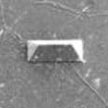 Getting from 2D to 3D has been quite a challenge for the graphene community. The transfer of two-dimensional graphene onto three-dimensional surfaces has proven to be difficult due to the fractures in graphene caused by local stresses. New research is bound to change that. Scientists have demonstrated graphene integration into a variety of different microstructured geometries - pyramids, pillars, domes, inverted pyramids, as well as the integration of hybrid structure of graphene decorated with gold nanoparticles on 3D structures.
Getting from 2D to 3D has been quite a challenge for the graphene community. The transfer of two-dimensional graphene onto three-dimensional surfaces has proven to be difficult due to the fractures in graphene caused by local stresses. New research is bound to change that. Scientists have demonstrated graphene integration into a variety of different microstructured geometries - pyramids, pillars, domes, inverted pyramids, as well as the integration of hybrid structure of graphene decorated with gold nanoparticles on 3D structures.
Jun 29th, 2015
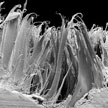 Observations made on a fern and an insect have led researchers to develop a nanofur structure that significantly reduces fluid drag. Both have surfaces covered by high density hairs which allow them to keep an air layer under water. This enables the bug to move nimbly and swiftly through the water by reducing the drag on its surface. Based on these observations, researchers have developed a very inexpensive, highly scalable method to produce a superhydrophobic, air retaining biomimetic surface - a 'nanofur' - which shows not only a high long-term stability but also a high resistance against additional applied pressure.
Observations made on a fern and an insect have led researchers to develop a nanofur structure that significantly reduces fluid drag. Both have surfaces covered by high density hairs which allow them to keep an air layer under water. This enables the bug to move nimbly and swiftly through the water by reducing the drag on its surface. Based on these observations, researchers have developed a very inexpensive, highly scalable method to produce a superhydrophobic, air retaining biomimetic surface - a 'nanofur' - which shows not only a high long-term stability but also a high resistance against additional applied pressure.
Jun 22nd, 2015
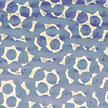 In conventional nanosphere lithography, the nanosphere configurations in the layers are determined by a spontaneous self-assembly process. Therefore, the final configurations are limited to those with or close to the minimal free energy giving rise to very simple patterns. Researchers have now managed to circumvent this thermodynamical restriction by putting the monolayers in a confined environment and constructing the bilayers with sequential stacking, both of which are critical for the formation of moire patterns.
In conventional nanosphere lithography, the nanosphere configurations in the layers are determined by a spontaneous self-assembly process. Therefore, the final configurations are limited to those with or close to the minimal free energy giving rise to very simple patterns. Researchers have now managed to circumvent this thermodynamical restriction by putting the monolayers in a confined environment and constructing the bilayers with sequential stacking, both of which are critical for the formation of moire patterns.
Jun 18th, 2015
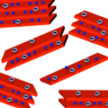 While exploring the possibility to realize graphene-like nanostructures of boron, carbon's neighbor in the periodic table, a team of chemical engineers has discovered an entirely new family of 2-D compounds. They demonstrated exfoliation of a well-known superconductor magnesium diboride, a layered material that consists Mg atoms sandwiched in between born honeycomb planes. These nanosheets can be an order of magnitude more transparent compared to their cousin graphene.
While exploring the possibility to realize graphene-like nanostructures of boron, carbon's neighbor in the periodic table, a team of chemical engineers has discovered an entirely new family of 2-D compounds. They demonstrated exfoliation of a well-known superconductor magnesium diboride, a layered material that consists Mg atoms sandwiched in between born honeycomb planes. These nanosheets can be an order of magnitude more transparent compared to their cousin graphene.
Jun 17th, 2015
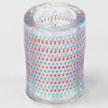 Researchers have developed a novel 3D-printing based method to produce highly monodisperse core/shell capsules that can be loaded with biomolecules such as therapeutic drugs. The method provides a robust control over particle properties, passive release kinetics, and particle distributions throughout a 3D matrix. Furthermore, these capsules are rendered stimuli-responsive by incorporating gold nanorods into the polymer shell, allowing for highly selective photothermal rupture and triggered temporal release of the biomolecular payload.
Researchers have developed a novel 3D-printing based method to produce highly monodisperse core/shell capsules that can be loaded with biomolecules such as therapeutic drugs. The method provides a robust control over particle properties, passive release kinetics, and particle distributions throughout a 3D matrix. Furthermore, these capsules are rendered stimuli-responsive by incorporating gold nanorods into the polymer shell, allowing for highly selective photothermal rupture and triggered temporal release of the biomolecular payload.
Jun 15th, 2015
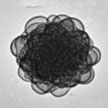 Over the last twenty years, scientists have developed many techniques to synthesize polymeric nanoparticles for a wide range of applications including surface coating, sensor technology, catalysis, and nanomedicine. However, the precise control of the size and shape of polymer nanoparticles remains challenging, and RDRP techniques still fall well short of producing large, well-defined macromolecules with the same size and degree of precision as nature (proteins, nucleic acids, etc.). In new work, researchers have developed a new technique to precisely control the size and shape of polymeric nanoparticles.
Over the last twenty years, scientists have developed many techniques to synthesize polymeric nanoparticles for a wide range of applications including surface coating, sensor technology, catalysis, and nanomedicine. However, the precise control of the size and shape of polymer nanoparticles remains challenging, and RDRP techniques still fall well short of producing large, well-defined macromolecules with the same size and degree of precision as nature (proteins, nucleic acids, etc.). In new work, researchers have developed a new technique to precisely control the size and shape of polymeric nanoparticles.
Jun 5th, 2015
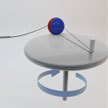 The most common method for making nanofibers employs electrospinning that uses an electrical charge to draw nanofibers from a polymeric solution. This technique utilizes large voltages and is strongly influenced by the dielectric properties of the material. It is also impossible to electrospin many biopolymers without blending with another polymer. Addressing these drawbacks, a team of researchers report a new method - magnetospinning - which utilizes a simple set-up that is independent of the dielectric constant of the solvent and polymer used.
The most common method for making nanofibers employs electrospinning that uses an electrical charge to draw nanofibers from a polymeric solution. This technique utilizes large voltages and is strongly influenced by the dielectric properties of the material. It is also impossible to electrospin many biopolymers without blending with another polymer. Addressing these drawbacks, a team of researchers report a new method - magnetospinning - which utilizes a simple set-up that is independent of the dielectric constant of the solvent and polymer used.
May 11th, 2015
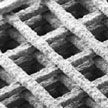 From a 3D printing perspective, graphene has been previously incorporated into 3D printed materials, but most of these constructs comprise no greater than about 20 volume % of the total solid of the composite, resulting in electrical properties that are significantly less than what has been achieced in new work. Here, researchers show that high volume fraction graphene composite constructs can be formed from an easily extrudable liquid ink into multi-centimeter scaled objects.
From a 3D printing perspective, graphene has been previously incorporated into 3D printed materials, but most of these constructs comprise no greater than about 20 volume % of the total solid of the composite, resulting in electrical properties that are significantly less than what has been achieced in new work. Here, researchers show that high volume fraction graphene composite constructs can be formed from an easily extrudable liquid ink into multi-centimeter scaled objects.
Apr 28th, 2015
 Getting from 2D to 3D has been quite a challenge for the graphene community. The transfer of two-dimensional graphene onto three-dimensional surfaces has proven to be difficult due to the fractures in graphene caused by local stresses. New research is bound to change that. Scientists have demonstrated graphene integration into a variety of different microstructured geometries - pyramids, pillars, domes, inverted pyramids, as well as the integration of hybrid structure of graphene decorated with gold nanoparticles on 3D structures.
Getting from 2D to 3D has been quite a challenge for the graphene community. The transfer of two-dimensional graphene onto three-dimensional surfaces has proven to be difficult due to the fractures in graphene caused by local stresses. New research is bound to change that. Scientists have demonstrated graphene integration into a variety of different microstructured geometries - pyramids, pillars, domes, inverted pyramids, as well as the integration of hybrid structure of graphene decorated with gold nanoparticles on 3D structures.
 Subscribe to our Nanotechnology Spotlight feed
Subscribe to our Nanotechnology Spotlight feed





